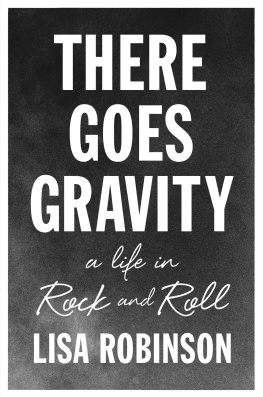Table of Contents
PRAISE FORMASTERS OF CHAOS
An Inside the Pentagon recommended book of 2004
Main Selection of the Military Book Club
[The Special Forces are] the jazzmen of the military world, working without a score, improvising their way out of trouble. Robinsons book gives us an intimate, valuable history of the Special Forces last two decades, and follows them through Afghanistan and Operation Iraqi Freedom.
New York Times
Masters of Chaos is an insightful and fascinating account of the training, skill, courage and sacrifices of United States Special Forces and their extraordinary contribution to our defense in Iraq and in the war on terror. I strongly recommend it to anyone interested in understanding the stamina and guts it takes to fight bravely and well in the most dangerous situations.
Senator John McCain, Author of Faith of My Fathers and Why Courage Matters
An exclusive look inside the world of U.S. special forces, the book is being cited by Sen. John McCain and the Washington Posts Book World as a signal contribution to the literature on the American military.
Brian Duffy, US News& World Report
Avoiding the breathless prose too often used to portray those who wear the green beret as Rambo-like super-commandos, [Robinson] depicts her subjects as flesh and blood humans.
Military Review
For Special Forces soldiers, reading Masters of Chaos provides useful lessons learned from Special Forces operations over the last 20 years. For readers not intimately familiar with Special Forces, Masters of Chaos is recommended as a well-researched look into the missions and day-to-day lives of the men of the Armys Special Forces.
Special Warfare Magazine
A well-rounded glimpse into this elite but covert group... a combination of battlefield action and personal insight rarely seen in accounts of Americas elite warriors.
National Guard
[A] detailed, compelling, and sympathetic account of these uncommon soldiers,....Robinson... puts a human face on the nuts and bolts of Special Forces training and real-world missions by weaving her analysis around the experiences of individual soldiers.
Military.com
Masters of Chaos is a truly exceptional depiction of how these amazing warriors operate effectively and calmly in what are quite literally chaotic situations. The title of the book says it allUS special forces are in fact masters of chaos. Linda Robinsons account is not only accurate, but is also spellbinding. No student of modern warfare should miss this important and timely work.
Congressman Jim Saxton, Chairman, Subcommittee on Terrorism, Unconventional Threats and Capabilities, House Armed Services Committee
Robinsons book is a first-rate account... ranks among the best military histories Ive encountered.
Huntington WV News
Impressively readable... the book is a compelling group portrait of some of Americas most dedicated warriors.
Publishers Weekly
[Y]ou may never look at... war news the same way... a rare look at missions carried out... in secret
Sherry Sontag, Co-Author of Blind Mans Bluff, the Untold Story of American Submarine Espionage
Linda Robinson has gone beyond the headlines and the hype to bring us into [the Special Forces] brotherhood.
James Bradley, author of Flags of Our Fathers and Flyboys
This fascinating, dramatic account of the Special Forces... shows us the face of war in the 21st century.
Robert Baer, author of See No Evil and Sleeping with the Devil
To those who serve
Cast of Characters
SFC Andy Brittenham
MAJ Jonathan Burns
COL Charles Cleveland
LTC Christopher Conner
SFC Richard Davis
MAJ Warren Foster
MAJ Simon Gardner
MAJ James Gavrilis
CW2 Tony Goble
LTC Christopher Haas
COL Kevin Higgins (Ret.)
MSG Alan Johnson
SGM James Kilcoyne
MG Geoffrey Lambert
MAJ Andy Lohman
MAJ Tony Martin
COL David McCracken (Ret.)
CW3 James Newman
SFC Matthew Nittler
CW2 John Pace
MSG Steve Rainey
SFC Mark Reynolds
SFC Roderick Robinson
MSG Tom Rosenbarger
MAJ Jeffrey Smith
MSG Michael T. Swift
LTC Kenneth Tovo
LTC Robert Waltemeyer
CW3 Randall Wurst
Other anonymous soldiers (who asked to be identified only by ODA number and duty position)
PREFACE TO THE PAPERBACK EDITION
The U.S. military, and American society as a whole, is once again being transformed by the experience of war. As an institution, the military is grappling with a phenomenon it has labelled irregular warfare to distinguish the insurgent and terrorist tactics of a nonuniformed adversary that fights hidden in populations from those of standing armored formations led by officers under a state authority. Signs abound that the challenges of this type of warfare are being taken seriously: a new manual has been issued on counterinsurgent operations, role-playing civilians figure prominently in training exercises, and irregular warfare has been given a central place in the Pentagons current strategic examination called the Quadrennial Defense Review.
The implications for remaking much of the militarys organization, training, and doctrine are huge. Foreign language training is just one example of a critically needed basic skill for fighting human networks. The officer and NCO corps contain many well educated and motivated Americans, and the institution has enshrined a process of learning lessons, but the thorny problem and the magnitude of retooling cannot be overstated. It requires a sea change from warfare based on mass, hardware, and even technology. Some of the most valuable lessons are ones from Vietnam that were forgotten or never learned, and which need to be relearned, ironically just as the memory of that war is fading from the nations consciousness.
Special operations forces and in particular the oldest component unit, the U.S. Army Special Forces, have pioneered skills and developed the mindset needed to contest what is essentially a war for the human mind, in which influence is a more potent force than bullets. The Special Forces have been focused on this type of warfare since their founding in 1952. Some of their equipment, training and techniques can be readily imparted to the larger military communityand indeed such adoption is proceeding apace in both Iraq and Afghanistan. I rode with a conventional unit from Alaska whose task it was to probe village loyalties and coax information from recalcitrant Pashtun elders in the barren mountains of the Khost province along the Pakistan-Afghan border. I saw similar attempts to penetrate the semi-rural badlands west of Baghdad, where a young medic stitched up an Iraqi whose arm had been severely hacked after he dared to report to soldiers the burning to death of a teacher working to get out the vote.
Some roles cannot be replicated for the simple reason that even the brightest and best 19-year-old soldier cannot exercise the same judgment, influence and versatility as a seasoned Special Forces sergeant in his thirties or forties. These carefully selected and time-tested men prove most effective when they are given the latitude required to tailor a solution to the problem of the moment. While there are no panaceas, the 12-man Special Forces team provides the most adaptive tool the military has invented for irregular warfare. Thus, it is no surprise that the Special Forces are in great demand: many of them have been sent four, five and six times to Iraq and/or Afghanistan. A more rapid expansion of their ranks is possible and desirable, with sufficient resources and at a measured pace. But it is just as important to uphold the quality of individuals selected and their extensive training, and not to break this tool through overuse.















